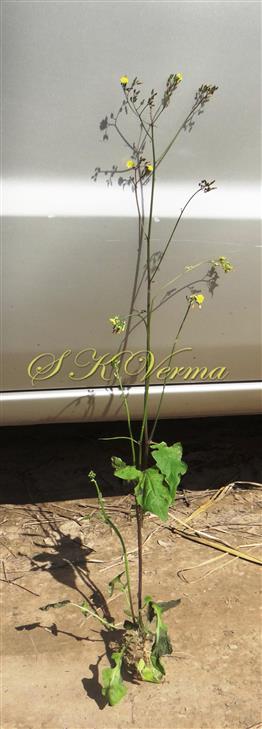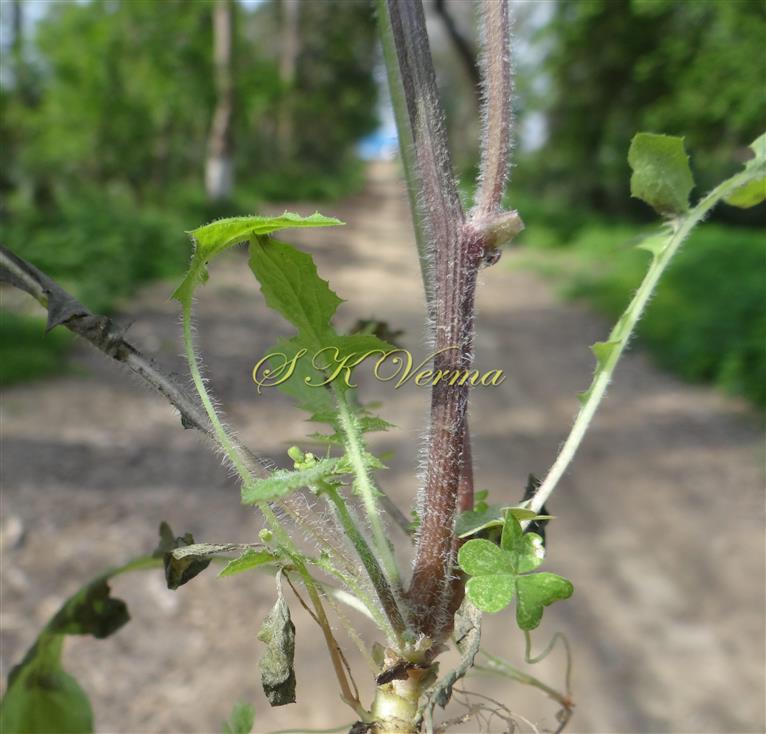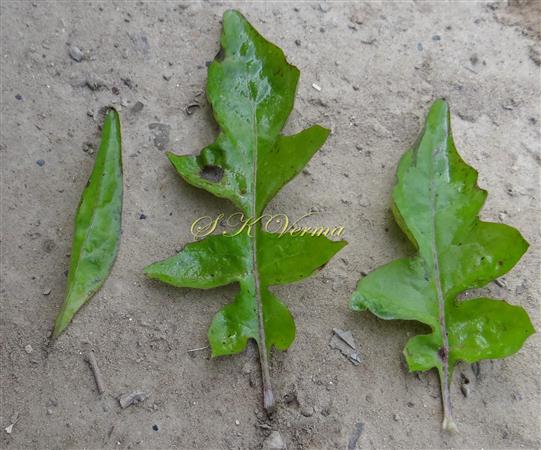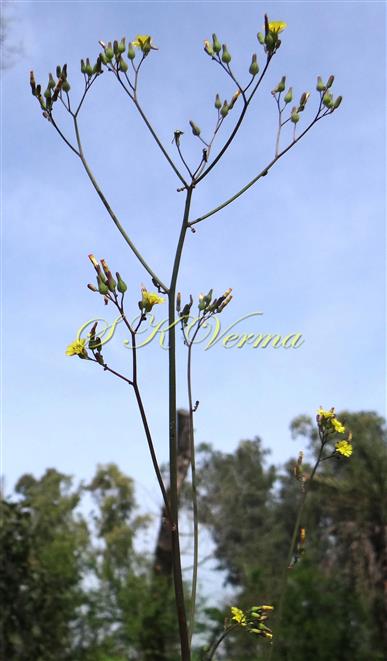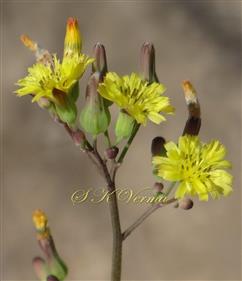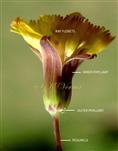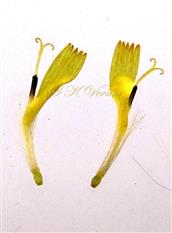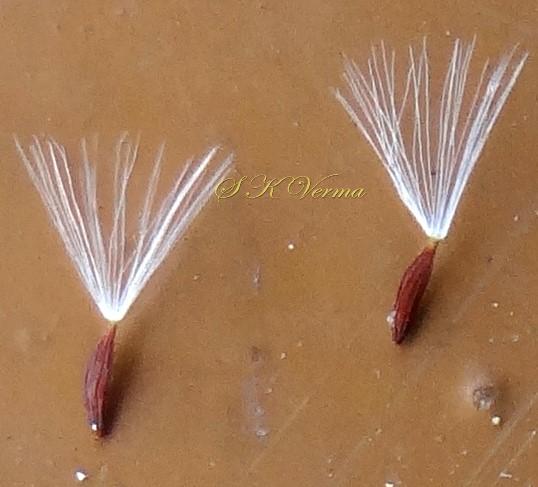YOUNGIA
Youngia
Cass., Ann. Sci. Nat. (Paris). Ser. 1. 23: 88. 1831; Shi & Kilian, Fl. China @ eFloras.org 20-21: 252; Mamgain & Rao in Hajra et al. Fl. India 12: 323. 1995; Fl. North Amer. @ eFloras.org 19-21: 255.
Herbs, perennial or annual, acaulescent or caulescent, often +/- rosulate, stem erect, often scapiform, usually branched distally, glabrous or somewhat to sparsely arachnoid hairy or pubescent. Leaves mostly basal, petiolate, petiole bases mostly +/- dilated and clasping, leaf blade mostly pinnately lobed (+/-lyrate), ultimate margins denticulate. Capitula 4-150+ in corymbiform or paniculiform arrays. Capitula ligulate, homogamous, with 5-25 florets; peduncles filiform, distally not dilated, seldom bracteate. Involucre cylindric, cylindric-campanulate, campanulate or broadly cylindric, 2-3+ mm diameter. Phyllaries usually in 2-series, mostly glabrous; outer phyllaries few to several, 1/4-1/2 as long as inner ones; inner phyllaries usually linear-lanceolate, +/- equal in length, midvein subapically crested and corniculte or flat, reflexed in fruit. Receptacle flat to convex, +/- pitted, glabrous, epaleate. Florets 5-25+, all ligulate, bisexual, fertile. Corolla yellow, sometimes abaxially purplish. Anther bases with linear, acute auricles. Cypselae +/- reddish brown, fusiform, columnar or +/- cylindric, compressed or subcompressed, with 4 or 5 main ribs each accompanied by (1 or) 2 or more slender secondary ribs, +/- spiculate to scabridulous on ribs; apex weakly or not beaked. Pappus borne on discs at tips of cypselae, 40-60+, basally coherent, white, subequal, smooth or scabrid, in 1 series.
43 species
Youngia japonica
Youngia japonica
(L.) DC., Prodr. 7: 194. 1838; Shi & Kilian, Fl. China @ eFloras.org 20-21: 260; Fl. North Amer. @ eFloras.org 19-21: 256; Koster, Blumea 23: 166. 1976; Maheshwari, Illustr. Fl. Delhi f. 98. 1966; Nair, Fl. Bashahr Himal. 168. 1977; Kaur & Sharma, Fl. Sirmaur 401. 2004; Singh & Sharma, Fl. Chamba Dist. 440. 2006; Prenanthes japonica Linn., Mant. Pl. 107. 1767; Crepis japonica (L.) Benth., Fl. Hongk. 194. 1861; Hook. f., Fl. Brit. Ind. 3: 395. 1882; Collett, Fl. Siml. ed. 2: 281. f. 84. 1921 (Reprint 1980).
Herbs, annual, usually 35-50 cm tall. Stem solitary or few, erect, branched from base, middle or only apically, striate, red, glabrous or basally densely hairy, leafy or leafless, fistulose. Leaves mostly basal/radical, in rosettes; basal leaves obovate-oblong or oblanceolate, up to 8.5-15 cm x 3-4 cm, lyrate, pinnatipartite or pinnatisect, glabrous or somewhat hairy, margin sinuate- dentate, base attenuate into 0.5-3 cm long narrowly winged, hairy, petiole-like portion; terminal lobe ovate, ovate-lanceolate or obovate, much larger than lateral ones, apex rounded to acute, mucronate; cauline leaves similar to basal leaves, abruptly or gradually reduced to entire bracts upwards on stem. Synflorescence corymbiform to paniculiform-corymbiform, usually with many capitula. Capitula ca. 7 mm long and 5 mm across, yellow, ligulate with 10-20+ ray florets on 4-15 mm long filiform peduncles. Receptacle epaleate. Involucres cylindric, 4-7 mm long. Phyllaries 2-seriate, often purple-tinged, glabrous; outer phyllaries small, ovate to triangular, 0.9-1.5 mm long, apex acute; inner phyllaries 5-6 mm long, oblong-lanceolate, subacute, slightly connate at base, margin +/- white scarious, apex acute. All florets ligulate, bisexual, 5-6 mm long, yellow. Corolla 4.5-5.5 mm long; tube ca. 2 mm long; limb/lamina obovate, apex truncate, 5-toothed. Anther tube dark green. Ovary 0.5 mm long; style ca. 5 mm long, 2-branched, hairy. Cypselae light brown to dark reddish or purplish brown, fusiform, 1.5-2.5 mm long, ribbed, scaberulous, apex strongly attenuate. Pappus 3-3.5 mm long, borne on disc at tips of cypselae, 40-60+, basally coherent, white, subequal, obscurely scabrid in 1 series.
Common Names: Oriental Hawkweed, Oriental False Hawkbeard
